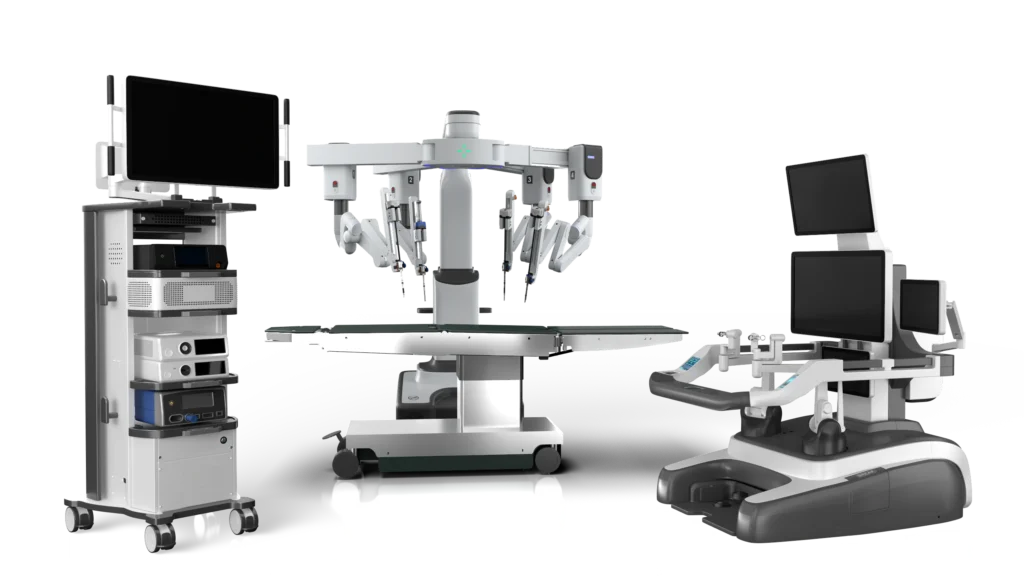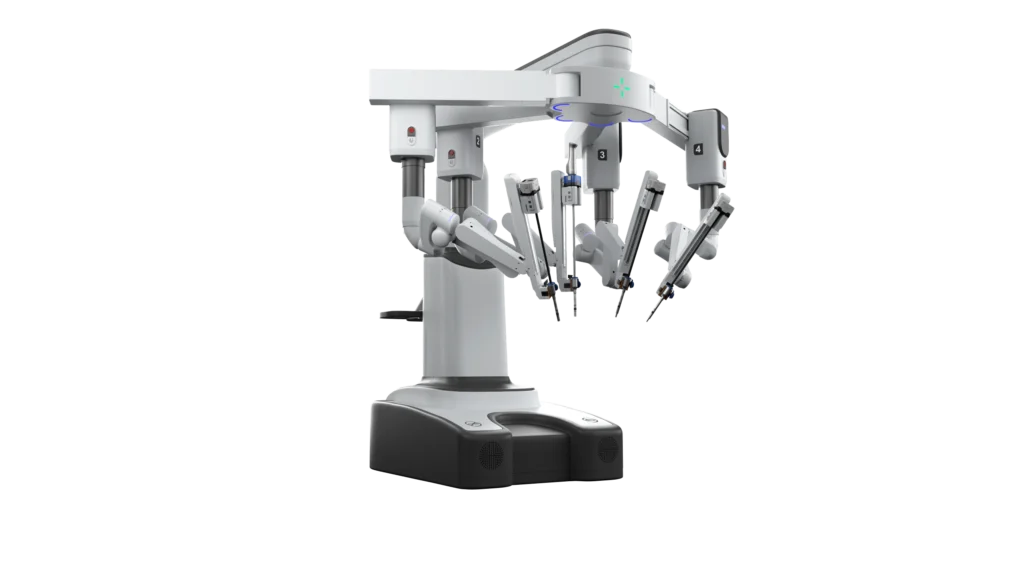Experience Precision Healing with AI-Powered Robotic Surgery
4.5+ Ratings
- Tieten Medicity, Ghodbunder Rd, Kasarvadavali, Thane West, Thane, Maharashtra 400615
- Open 24 hours
- +91 9920187777
- 022 6938 8000
Robotic surgery is a cutting-edge medical technique that uses advanced robotic systems to perform complex procedures with enhanced precision, flexibility, and control. Guided by highly skilled surgeons, robotic technology enables minimally invasive operations that often result in smaller incisions, reduced pain, and faster recovery for patients.

How AI-Powered Robotic Surgery Works
A Robotic Surgical System is a cutting-edge medical technology designed to assist surgeons during procedures by providing enhanced precision, flexibility, and control.
Surgeon Console
This is the control center of the system, where the surgeon sits and operates. The console provides a highly ergonomic setup, allowing the surgeon to control the robotic arms with precision.
- Patient Cart
The Patient Cart is located next to the patient and is equipped with robotic arms that hold various surgical instruments. The patient cart also houses a high-definition 3D camera that transmits detailed, magnified images of the surgical site back to the surgeon, giving them a more accurate view compared to traditional methods. - Vision System
The Vision System is an integral part of the robotic surgery setup, providing the surgeon with high-definition, 3D views of the inside of the patient’s body. The system offers enhanced depth perception, magnification, and clarity, allowing the surgeon to see intricate details that may be missed with traditional methods.
Types of AI-Powered Robotic Surgery

Urology Surgery: Prostatectomy, Nephrectomy, Cystectomy, Adrenalectomy Ureteric Reimplantation and countless others.
Gynaecology Surgery: Hysterectomy, Vesicovaginal Fistula, Sacrocolpopexy, Vaginaloplasty with bowel reposition Myomectomy And countless others.

- Thoracic Surgery: Thymectomy, Lobectomy, Esophagectomy, Pneumonectomy, Mediastinal Cyst And countless others.
- GI Surgery: Gastrojejunostomy, Lower Anterior Resection, Gastric Bypass, Abdominoperineal Resection And countless others.
- General Surgery: Bariatric Surgery, Hernias, Gastrectomy, Nissen Fundoplication, Pancreaticoduodenectomy (Whipple) And countless others.
- Head Neck Surgery: TORS, Neck Resection Dissection, ThyroidectomyAnd countless others.
- Onco Surgery: All radical procedures of the above anatomies.
Advantages of AI-Powered Robotic Surgery

Smaller incisions and minimal scarring

Lower risk of infection

Shorter hospital stays

Faster recovery and return to daily life

Why Choose Us for AI-Powered Robotic Surgery?
Experienced robotic surgeons with proven success rates.
State-of-the-art robotic surgical technology.
Personalized pre- and post-operative care.
Focus on patient safety and comfort.
FAQs
Yes, robotic surgery is highly safe when performed by trained surgeons and often has fewer complications than traditional methods.
In many cases, yes. Robotic surgery offers smaller incisions, faster recovery, and greater accuracy compared to traditional open surgery. However, it depends on the patient’s condition.
The actual surgical time varies by procedure. Some robotic surgeries may take slightly longer than traditional ones due to setup, but recovery is typically quicker.
Yes, robotic surgery is considered very safe when performed by experienced surgeons. The system is fully controlled by the surgeon at all times.
In most cases, if your insurance covers minimally invasive or laparoscopic surgery, it should also cover robotic surgery. Coverage may vary, so check with your provider.
Yes, but they are usually very small compared to traditional open surgery scars, leading to better cosmetic outcomes.
Recovery times are typically shorter than traditional surgery. Most patients return to normal activities within a few days to a couple of weeks, depending on the type of surgery.
Most patients eligible for laparoscopic or minimally invasive surgery may also be candidates for robotic surgery. However, a consultation is required to confirm.
No. The robot does not operate independently. Every movement is guided and controlled by the surgeon.
Like all surgeries, there are risks such as bleeding, infection, or complications. However, robotic systems often reduce these risks compared to open surgery.
Book An Appointment
Copyright © 2025 Tieten Medicity | All Rights Reserved
